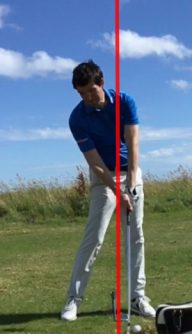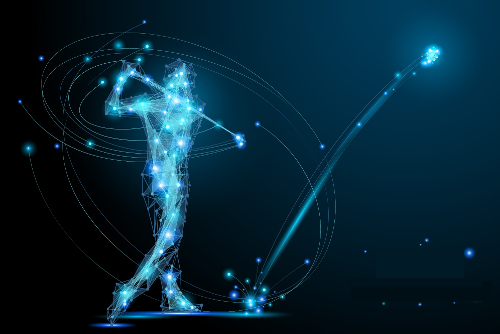Free up your head movement for a better swing and a healthier back
“Keep your head down" is the most commonly offered piece of advice and the most damaging one too. Not many beginners escape hearing it, often along with "keep your head still", "keep your head over the ball" and "eyes on the ball". If you approach learning golf with these concepts, then you've got no chance of developing an athletic swing. Not only that, you'll likely end up with back problems.
So, to set things straight...
"Keep your head down"? No, you want your chin a little up off your chest to allow space for your upper body to move. Then, once the ball has been struck, your head must be allowed to come forward and up into the finish - to avoid a sore back as much as anything else.
"Keep your head still"? No, every part of our body is in motion during a golf swing, nothing is still. If you're determinedly keeping your head still while simultaneously trying to move the rest of your body, then your swing is at odds with how your body is designed to move - never a good idea. Again, a recipe for injuries.
"Keep your head over the ball"? No, all good players will have their heads, to varying amounts, behind the ball, from set up to impact, not over the ball.
"Keep your eye on the ball"? If you were hitting a nail with a hammer would you ever take your eyes off the nail before you hit it? Instinctively, you'll always look at the ball - you don't have to try to do it! If you're trying hard to do this, there's no way you're going to develop an athletic motion.
Please, please erase these concepts from your brains! Your swing will improve and you'll be less likely to develop back problems.
A body-friendly motion



 (L to R) Photo 1: The head will start a little behind the ball in set-up. The right hand goes under the left hand in the grip, therefore the right shoulder is lower, therefore the spine naturally tilts a little away from the target.
(L to R) Photo 1: The head will start a little behind the ball in set-up. The right hand goes under the left hand in the grip, therefore the right shoulder is lower, therefore the spine naturally tilts a little away from the target.
Photo 2: The head will move a little further (roughly another 2 or 3 inches) behind the ball in the backswing. That happens simply to allow the torso to turn, without twisting the spine.
Photo 3: The head will be behind the ball through impact. We're hitting into the back of the ball.
Photo 4: The head will come forward and up into the follow-through, with your eyes looking out to the target. Aim to finish with your chest, hips and left foot all stacked up in a straight line-no arching back. This is very important to avoid pressure on your back, which will happen if you're straining to keep your head down too long after impact.
If you'd like help with your game, please contact me to arrange lessons.
Good golfing!



